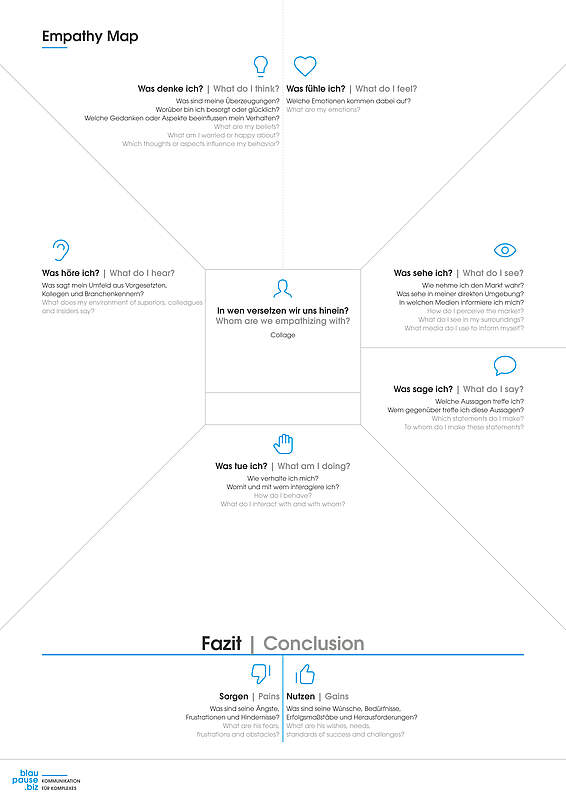Design Thinking Methods - Part 5: Empathy Map
In our series "Design Thinking for your B2B Marketing" we present helpful tools that support you in your strategic marketing.This is about the Empathy Map, which helps you to put yourself in the shoes of your target groups.
Design thinking is a creative approach to solving problems and developing new ideas from the customer's perspective. Use the agile methods of this way of working to move your B2B marketing forward.
Do you know the feeling of not seeing the wood for the trees? In a stressful working day, it is easy to lose sight of what is most important: the customer's wishes. Often you are too focused on your own products and their features and forget what the customer actually wants. So the motto is: put yourself in your customers' shoes by becoming their customer.
With the help of the Empathy Map, which we will present to you today, you will succeed in changing perspectives. And a communication that appeals to your customers to the maximum.
1. What is a Empathy Map and for what do I them?
The Empathy Map is a Design Thinking tool that allows you to put yourself in the shoes of your target groups by asking them specific questions and to visualise what they want.
As a less time-consuming alternative to the persona concept, it has become widely accepted in recent years and is a great advantage, especially for agile teams that are focused on implementing new ideas within a short period of time. To create an empathy map, you only need employees who know your target groups particularly well - and paper and pen.
2. How create I create a Empathy Map?
An empathy map usually consists of four to six quadrants. Within these quadrants, write down the following questions:
- What do I think?
- What do I feel?
- What do I hear?
- What do I see?
- What am I saying?
- What do I do?
In addition, there is a conclusion in the form of the person's "concerns and benefits": What moves them and what do they wish for?
The quadrants can of course be changed and supplemented according to your own ideas, but make sure that the empathy map remains clear.

3. How edit I a Empathy Map?
Get your team together - all perspectives are valuable. Especially those employees who have a lot of customer contact often provide exciting insights. If you have several target groups, it is best to divide your team into small groups. Each team then fills in the Empathy Map based on a stereotypical person representing that target group. Afterwards, all groups present their empathy maps and discuss them together.
4. Conclusion: To your customers to convince, you must you them know them
Keep reminding yourself who you are talking to and what your target groups need. Simple tools like the Empathy Map will help you gather valuable information in a short time. Place special emphasis on concerns and benefits. Based on your findings, you can optimise your communication in the next step. Because you now have the needs and desires of your target groups clearly in front of your eyes, you can tailor your messages precisely. In future, you will no longer simply describe your products, but pick up your customers where they are. This creates maximum proximity and relevance.

Marie Great
The strategy and creative teams at Blaupause are passionate about creating relevant and creative content for our B2B blog. Do you have a topic related to B2B marketing, innovation management, employer branding, etc. that you'd like to learn more about? Bring it on!

